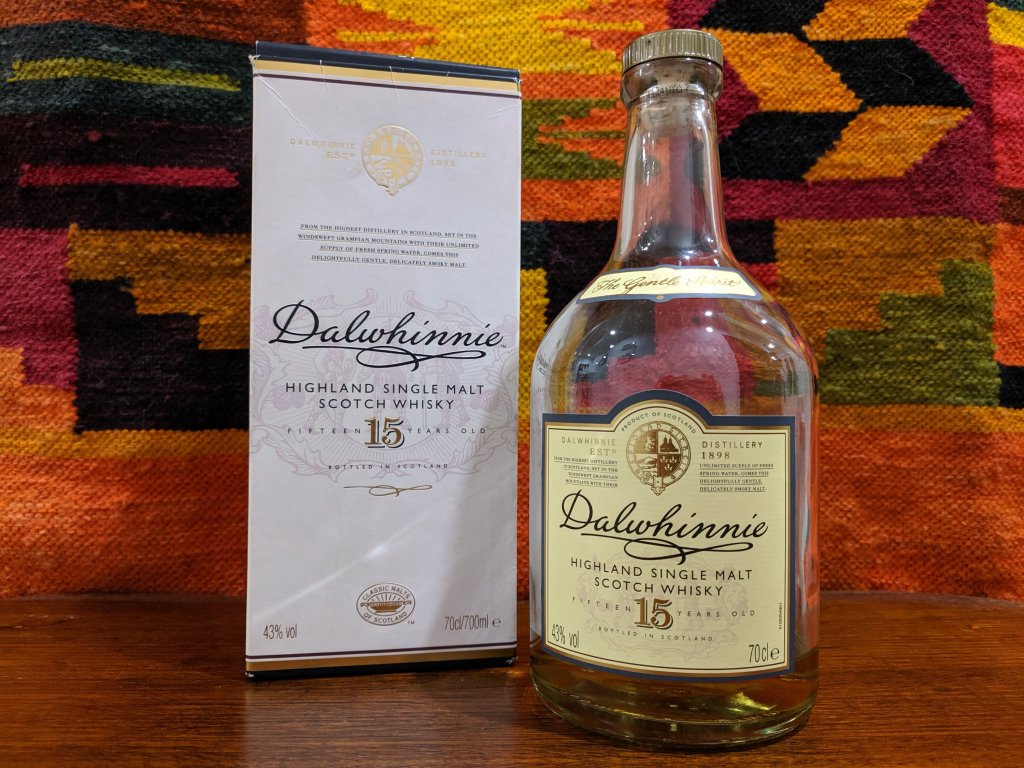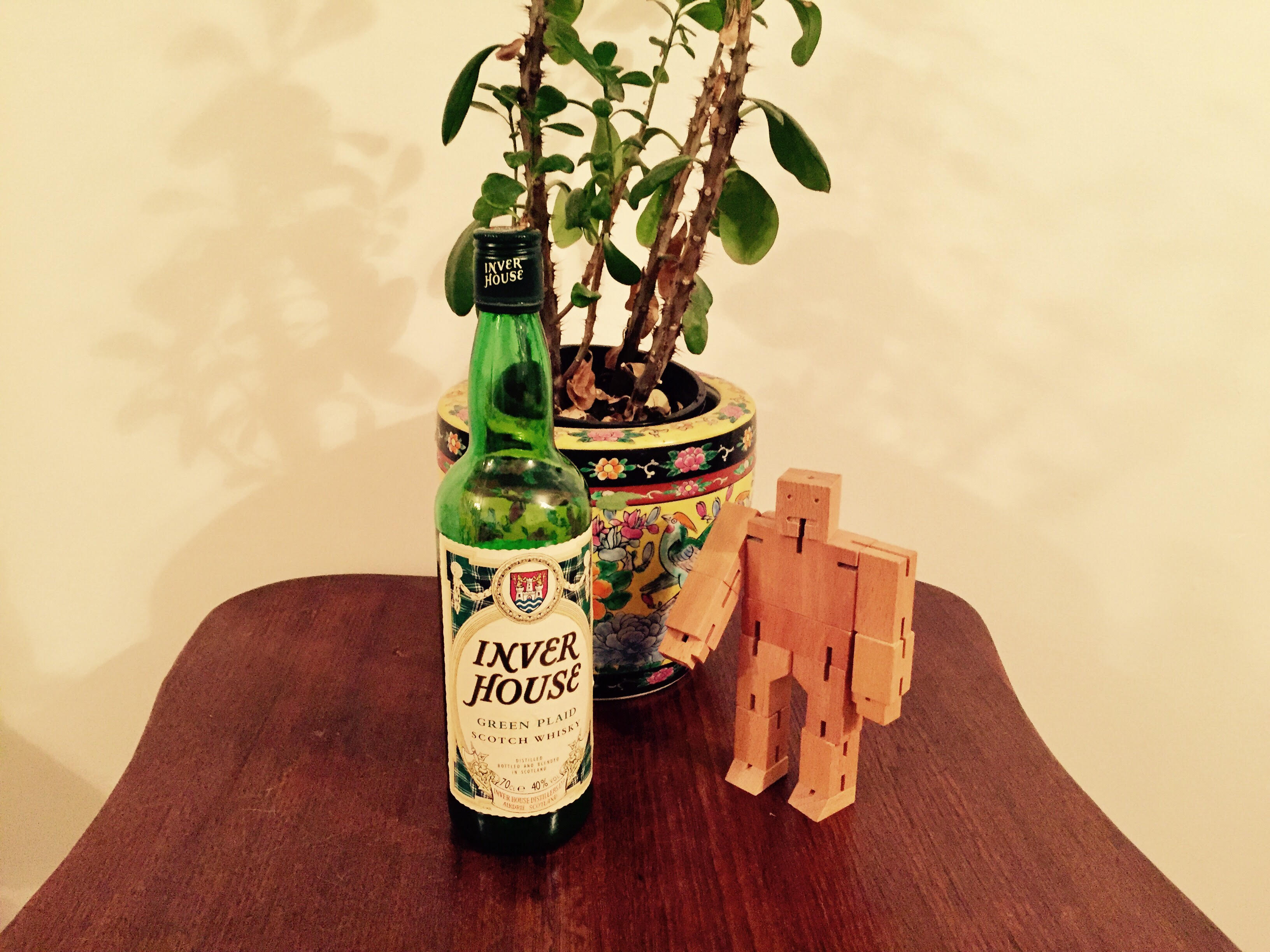Posted by: Ted
It’s my Dad’s birthday today. I suppose this day tends to make me a bit introspective because he died in 2013. Since then I’ve been finding my way through life in certain aspects without the guiding hand of a father, a fact that I regret more as I grow older and one that I didn’t appreciate enough as a callow youth. History and literature warn us of this condition of course, but I suppose it’s hard to understand at the time… and by then it’s too late.

The reason I first started this musing, over breakfast, as you do, was that I was trying to decide what dram would be best to toast to his health tonight (ironic as that is). I’ve mentioned this before, but for some reason I always associate him with Dalwhinnie 15 (whisky-wise at any rate). It’s a bit of a mystery why really, as it’s not like he was a great aficionado of Scotland’s highest distillery.
If anything, I should remember him by the 1L bottles of Johnnie Walker Red he used to keep in the pantry and swore by as a cold remedy. But the whisky snob in me has become jaded against the walking man in the red jacket I think, so while the memory is fond, the desire to imbibe from that particular cup is lacking.
I suppose, getting down to it, I think the real reason I entwine my father and the Dalwhinnie is purely a selfish one – I bought him the bottle. So, is it really a reflection of him, or of me? My own tastes overriding his in my memory?
To mount a defence against myself, the sentiment comes from a place of love. I bought him the bottle when m’colleague and I were first beginning our whisky journey, back before Whisky Waffle was even a thing. Back when we were in a Cold War arms race to impress each other with ever more interesting bottles.
During my teenage years and as a young adult, I had always struggled to talk with my father. I mean in the deep, honest and open sense, sharing the deeper parts of myself with him. We were quite different people, and it didn’t help that I was wrapped up in the arrogance of youth and he tended towards quietude and reserve.
I suspect that with the Dalwhinnie 15, my hope was that here was something that we could enjoy together. I know that I wanted to share my newfound interest with him and to talk with him about it, even though he probably found me slightly pretentious (still am?). The quality of the 15 would have been a good social leveller though. We did enjoy the occasional dram when I was around too, but whether it opened us up I’m not as sure.
I know from friends and the world at large that young men (hopefully) tend to develop a deeper, more equal and respectful relationship with their fathers as they grow older. I’m generally pretty sanguine about his death in itself, but I do regret that he is gone. With maturity and hindsight, I wonder what our relationship, perhaps even friendship (which is a nice thought), would be now. Alas, so many unanswered questions, so many things left unsaid.
I still have that bottle of Dalwhinnie sitting on my shelf. Of course I reclaimed it after the fact, it would be bad manners not to! It’s down to the dregs now, but for some reason I haven’t been able to finish it.
Part of me has just been avoiding writing a review about it. But perhaps, subconsciously, it’s because the bottle is wrapped up with other memories? Would another bottle make it easier to put pen to paper and record the facts as I see, smell and taste them? Perhaps.
Keeping that bottle alive in such a diminished state has been doing it no favours either. After at least five years rattling around the bottom, exposure to time and the elements will have irrevocably changed the nature of the spirit by a thousand tiny cuts… Huh, that’s quite a good metaphor for incurable cancer actually.
I am quietly an advocate for the right to die with dignity, to bring about closure while enough shreds of a person’s humanity remain. Or even just to be able to make choices about how and where you would like to die, assisted or not, if that luxury is able to be afforded to you. My heart broke enough with the gifts of time and the acceptance of Death’s ultimatum, so I cannot begin to fathom the world-shattering pain that suddenness would bring, although I have trodden the broken glass of its edges.
So, I think that the time has come to bring an end to my bottle. Another one can always be bought and the same memory attached to that mnemonic vessel time and again (as long as Diageo doesn’t decide to drop the 15). It is unfair to the ideals that I originally bought it, to share with my father, and the effort that went into creating the liquid itself, to allow it to moulder away on my shelf. Whisky is, of course, for drinking.

No, this one is for me, as my porridge grows cold in the microwave and a small voice in my head quietly screams that I need to get to work (luckily the commute is just to the back room, as I’m working from home during COVID-19). But overriding all else is Dad’s voice, growing fainter every year, which has derailed me on this day to come unbidden into my mind and drip bittersweet words onto the page.
Or maybe it’s just me, alone at the kitchen table.
Slainte Mhor, You.
I miss you.





